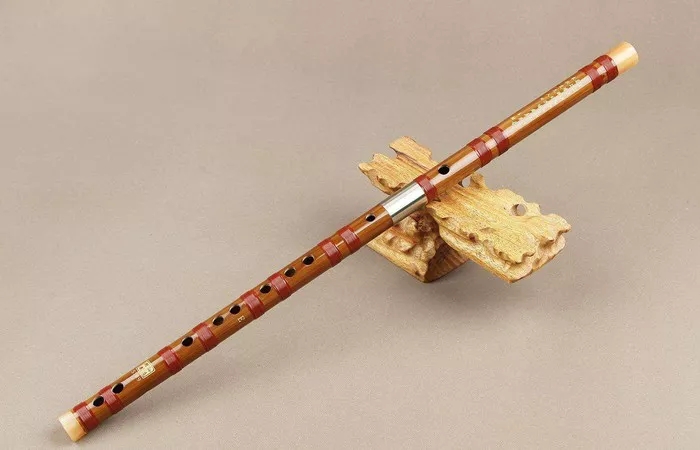The Peruvian pan flute, also known as the Zampona, is an enchanting instrument that has captivated audiences around the world with its ethereal, haunting melodies. Originating from the Andes region of Peru, this instrument is crafted with precision and played with finesse. If you’re eager to explore the world of the Peruvian pan flute, this comprehensive guide will walk you through the essential steps and techniques to help you become a proficient player.
1. Understanding the Peruvian Pan Flute
The Peruvian pan flute is a wind instrument comprised of several tubes of varying lengths, each producing a distinct pitch. These tubes are carefully crafted from bamboo or other suitable materials. The number of tubes in a pan flute can range from a few to over twenty, depending on the design. Each tube is open at one end and closed at the other, and they are tied together to create a single, harmonious instrument.
2. Choosing the Right Pan Flute
Selecting the right pan flute is crucial for your musical journey. Consider factors such as the number of tubes, the type of bamboo or wood used, and the craftsmanship. For beginners, a simple five or six-tube pan flute is a good starting point. These are easier to handle and learn on, allowing you to grasp the fundamentals of playing the instrument.
3. Posture and Positioning
Proper posture and positioning are fundamental in pan flute playing. Begin by sitting in a comfortable, upright position with your back straight. Place the pan flute horizontally in front of you, with the open ends facing away from you. The closed ends should be close to your body, and the tubes should be arranged in ascending order from left to right.
4. Embouchure Technique
The embouchure technique involves how you shape your mouth and lips to produce sound on the pan flute. To create a clear tone, gently place your lips over the open end of the tube you intend to play. The position of your lips and the angle at which you blow will influence the pitch and quality of the sound.
5. Learning the Scales
Before delving into complex melodies, start by mastering the basic scales. The pan flute uses a diatonic scale, which consists of seven notes: Do, Re, Mi, Fa, Sol, La, and Si. Practice playing each of these notes individually to get a feel for the instrument and its range.
6. Breath Control
Controlling your breath is a vital aspect of playing the pan flute. Since the instrument relies on your lung capacity, practice regulating your breath to produce consistent, steady tones. Ensure that your breath is well-supported and that you don’t run out of air while playing.
See Also: How to Play a Sharp on Flute: A Step-By-Step Guide
7. Playing Techniques
There are several playing techniques that add depth and variety to your pan flute music:
- Legato: Playing notes smoothly and connected.
- Staccato: Playing short, separated notes.
- Vibrato: Adding a slight, pulsating variation in pitch to a note.
- Glissando: Sliding smoothly from one note to another.
- Tremolo: Rapidly alternating between two or more adjacent notes.
- Experiment with these techniques to develop your own unique playing style.
8. Basic Melodies
As you become more comfortable with the instrument, start learning simple melodies. Peruvian folk tunes and traditional songs are excellent choices for beginners. Begin by playing these songs at a slow tempo, gradually increasing your speed as you gain confidence.
9. Practice and Patience
Like any musical instrument, mastering the pan flute takes time and dedication. Consistent practice is key to improving your skills. Set aside a regular practice schedule to hone your technique, build your repertoire, and refine your playing.
10. Seek Instruction
If you’re serious about becoming a skilled pan flute player, consider seeking instruction from a qualified teacher or tutor. They can provide personalized guidance, correct any errors in your technique, and introduce you to advanced playing techniques.
11. Record Your Progress
Recording yourself while playing the pan flute is a valuable practice. It allows you to assess your performance objectively, identify areas for improvement, and track your progress over time. You can also share your recordings with friends and fellow musicians for feedback and encouragement.
12. Playing in Ensembles
Pan flutes are often used in ensembles, especially in Andean folk music. Playing with others can enhance your musical experience and improve your timing and ability to harmonize. Consider joining a local musical group or collaborating with other musicians.
13. Explore Different Styles
The pan flute is a versatile instrument that can be incorporated into various music styles, including classical, world, and contemporary music. Experiment with different genres to expand your musical horizons and challenge your skills.
14. Perform and Share Your Music
Once you have built confidence and competence in your pan flute playing, consider performing in front of an audience. Sharing your music with others can be a rewarding and fulfilling experience. You can perform at local events, gatherings, or even record your music for online platforms.
In conclusion
The Peruvian pan flute is a captivating instrument with a rich history and profound cultural significance. Mastering this unique instrument requires dedication, practice, and patience, but the journey is incredibly rewarding. As you embark on your pan flute journey, remember to choose the right instrument, maintain proper posture and embouchure, learn the scales, and practice various playing techniques. Seek instruction if needed, record your progress, explore different styles, and share your music with the world. The enchanting melodies of the Peruvian pan flute are waiting for you to unlock their full potential through your dedication and passion for music.


